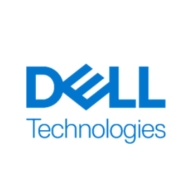

Stackify and Moogsoft compete in application performance and monitoring. Moogsoft appears to have the upper hand due to its AI-driven insights and comprehensive feature set, which are perceived to justify its higher cost.
Features: Stackify provides real-time error tracking, performance metrics analysis, and custom dashboards to enhance troubleshooting and optimization. Moogsoft offers AI-driven operational insights, noise reduction capabilities, and an event correlation feature to improve incident management efficiency. The monitoring manager and high-level diagnostic capabilities further add value to its offering.
Room for Improvement: Stackify could improve its advanced AI capabilities and fine-tune its noise reduction features to match complex environments. It also needs enhancements in collaboration features and broader tool integrations. Moogsoft requires a faster update cycle, better cloud functionality alignment, and a more straightforward deployment process to appeal to smaller teams and startups.
Ease of Deployment and Customer Service: Stackify offers straightforward deployment and responsive customer service aimed at quick problem resolution, appealing to teams needing quick implementation. Moogsoft, though requiring a more involved setup due to its complexity, provides strategic guidance and proactive support, beneficial for organizations ready to invest in detailed configurations.
Pricing and ROI: Stackify's lower initial setup cost is appealing for smaller teams or startups. It provides immediate cost-benefit through quick results. In contrast, Moogsoft's pricing reflects its advanced features, offering a potentially higher ROI due to enhanced operational efficiencies and comprehensive incident management and resource optimization over time.
| Product | Market Share (%) |
|---|---|
| Moogsoft | 0.9% |
| Stackify | 0.3% |
| Other | 98.8% |


| Company Size | Count |
|---|---|
| Small Business | 5 |
| Midsize Enterprise | 4 |
| Large Enterprise | 11 |
| Company Size | Count |
|---|---|
| Small Business | 3 |
| Midsize Enterprise | 2 |
| Large Enterprise | 2 |
Moogsoft is an AI-based solution that ensures continuous availability and prevents downtime by utilizing machine learning and advanced correlation on your organization’s stack. Moogsoft detects incidents before they can escalate, notifies the proper response teams, and applies machine learning in order to understand patterns to help prevent similar issues in the future.
Moogsoft sits on top of an organization’s production stack and extends across automation, service management, log indexing, and notification tools. Algorithmic Noise Reduction automatically reduces event volumes to unique alerts without relying on rules, filters, or models. This enables teams to analyze all monitoring ecosystem events with no noise and no blind spots.
With Moogsoft extensive integration options, users can aggregate all their observable data into a single location and create automated workflows to detect and remediate incidents in third-party systems, ensuring their system remains unharmed. Moogsoft’s anomaly detection tools detect incidents as they emerge, allowing security teams to respond swiftly before they impact customers.
Teams can easily set up their own integrations using Moogsoft’s REST API and webhook. The solution provides guidance for each step, allowing users to import data from whatever tool they need with just a few mouse clicks.
Some of Moogsoft’s top features and benefits include:
Reviews from Real Users
Moogsoft stands out among its competitors for a number of reasons. A few major ones are its monitoring tools, its user-friendly interface, and its strong AI capabilities.
Vivek S., an O&M Lead at a communications service provider, writes, “The most valuable feature is the monitoring manager. Different components and different monitoring tools integrate with and send data to Moogsoft.
This is a user-friendly solution. It is very easy and very comfortable to use, with everything available on a single screen.
The AI component allows you to check previous cases and diagnose problems easily. It will show you what happened last time the same event occurred.”
Stackify is an application performance management (APM) solution that combines application performance monitoring with logs, errors, and reporting. It is a SaaS solution that is developer-focused. Users can quickly scan, identify, and repair issues with applications. Stackify APM offers valuable tools, such as Prefix and Retrace, which help to make it a comprehensive and valuable APM solution. Stackify is now part of the Netreo family of IT Infrastructure Management (ITIM), which is considered one of the fastest-growing IT organizations in the marketplace today.
Stackify Prefix
Stackify Prefix helps developers write better code, faster. The tool examines, tests, and approves code as it is being written. Almost every new application is code-perfect, negating the need for exhausting troubleshooting and frustrating time-consuming code review.
Prefix is able to discover poor-performing SQL queries, ORM queries, potential bottlenecks, and concealed exceptions prior to moving the application into production.
Prefix offers Summary Dashboards, intuitive suggestions, integrated logs, and distributed tracing. Distributed tracing expands visibility to cloud-native applications, microservices, and containers and can also provide additional transparency to cache services, web services, third-party services, and more. Users are able to easily move from logs to traces and back.
This valuable tool ensures developers are able to consistently release the best code possible in the least amount of time, while improving performance, productivity, and profitability.
Prefix is a very robust and easy-to-use tool. It can be used seamlessly with Linux, macOS, and Windows. Prefix integrates well with numerous languages, such as Java, Python, Ruby, PHP, Node.js, .Net, and .Net Core.
Stackify Retrace
Stackify Retrace is a user-friendly, trusted APM solution used in more than fifty countries worldwide. Users know that Retrace is able to ensure they can complete quicker, more efficient application development and consistently enhance overall application performance by suggesting important intuitive suggestions users need.
This solution is beneficial to both developers (Dev) and operations (Ops) personnel to learn to improve code and immediately finetune issues by:
Retrace Real User Monitoring (RUM) uses both front-end and back-end monitoring to give users a complete picture of what is going on with the applications. This intuitive dashboard displays performance with a complete breakdown of resource usage and integrates the server-side and client traces into one engaging, user-friendly, extensive view.
Retrace is an out-of-the-box solution that works seamlessly with Java stacks, PHP, Node.js, Ruby, Python, .Net, and .Net Core. It is also compatible with many of today’s popular frameworks, such as AWS, Azure, Elasticsearch, MongoDB, MySQL, Oracle, PostgreSQL, Redis, and SQL Server. Additionally, Retrace will work effectively with many cloud providers, containers, and languages, and offers excellent and easy integration with today's favorite tools such as Jira, Slack, Jenkins, and more.
We monitor all IT Infrastructure Monitoring reviews to prevent fraudulent reviews and keep review quality high. We do not post reviews by company employees or direct competitors. We validate each review for authenticity via cross-reference with LinkedIn, and personal follow-up with the reviewer when necessary.